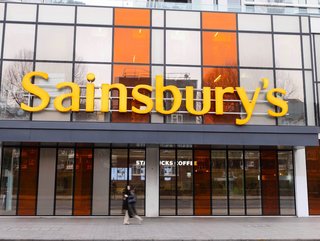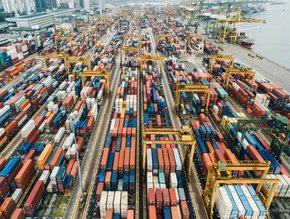Sainsbury's: Reducing Emissions Across its Value Chain

The supermarket chain has revealed its new goals for decreasing its greenhouse gas (GHG) emissions, which have been verified by the Science Based Targets initiative (SBTi), the global body that sets requirements for and approves emission reduction targets.
The business had pledged to cut both its scope one (direct emissions from a company's vehicles and refrigeration) and scope two (emissions that occur elsewhere to generate the electricity or heat consumed by the company) emissions by 50% by 2030. Sainsbury's has now upped that pledge to a 68% reduction within the same time frame.
How will Sainsbury's cut its own emissions?
To reduce these emissions, Sainsbury’s has removed hydrofluorocarbons (HFCs) and natural gas across its stores through the introduction of more efficient refrigeration systems and use of excess heat from the refrigeration systems to heat the stores. Its also introducing 100% LED lighting across its entire estate, reducing lighting energy consumption by an average of 70%. As well as now using 100% renewable electricity across its estate and increasing the amount of on-site generation at its stores. Plus, launching its most energy-efficient supermarket in Hook, Hampshire, which uses half the energy of a similar-sized Sainsbury’s store and 25% less electricity.

Ruth Cranston, Director of Corporate Responsibility and Sustainability at Sainsbury’s, said: “Getting our updated targets validated by the SBTi is an important step forward. The effects of climate change are already very real so it’s vital that we act now to reduce emissions and protect and restore nature to help us build a resilient future for all. Our ambition to achieve net zero by 2050 will require transformation across our whole business, supply chains, as well as how we help our customers to make more informed choices. We can't do this alone, so collaboration as an industry will be critical to drive the required change."
Sainsbury's has also tweaked its scope three reduction target, into two separate commitments. The operational target, which includes areas such as transport, energy use and manufacturing sites, has been increased to 50.4%, demonstrating the retailer’s commitment to tackling GHG emissions generated across its value chain.
To reduce these emissions, the supermarket has introduced a new Taste the Difference Aberdeen Angus range in selected stores which offers a 25% lower carbon footprint compared to industry standard, making it the largest low carbon beef range ever produced in the UK.
The supermarket is also launching Smart Charge, a dedicated EV charging business, which will introduce over 750 bays in more than 100 Sainsbury’s locations by the end of 2024, making it one of the UK’s top five providers of ultra-rapid EV charging, helping to reduce carbon emissions by supporting the uptake of electric vehicles.
It has requested suppliers to disclose their site level emissions and reduction plans through Manufacture 2030 and HIGG (sustainability and analytics platforms) to help identify hotspots and opportunities for decarbonisation in its supply chain.
Collaboration the key to hitting targets
Plus, along with other signatories of the WWF Retailer Commitment for Nature, it has asked its suppliers that are responsible for a high proportion of its scope 3 emissions to get approved science-based targets by the end of 2025.
The retailer has also continued to work collaboratively with WRAP and other signatories to identify the biggest opportunities for collective action on emission reduction.
Catherine David, Director of Behaviour Change and Business Programmes, WRAP said: “We welcome this move by Sainsbury’s, to collaborate on action towards net zero and set clear and validated targets. We know that to achieve the scale and speed of GHG reductions needed, working to change how we produce and consume food is essential. We are delighted that, as signatories to Courtauld 2030 – a commitment based on collaborating to achieve key environmental targets around sustainable food production - Sainsbury’s are leading by example.”
Earlier this year, Sainsbury's was the only UK supermarket to be awarded an A rating for its environmental commitments on climate change by the Carbon Disclosure Project (CDP) for the tenth consecutive year.
Sainsbury's was also recognised by CDP as a 2023 Supplier Engagement Leader for work engaging with suppliers to tackle climate change.
Make sure you check out the latest edition of Procurement Magazine and also sign up to our global conference series - Procurement & Supply Chain LIVE 2024
**************
Procurement Magazine is a BizClik brand






